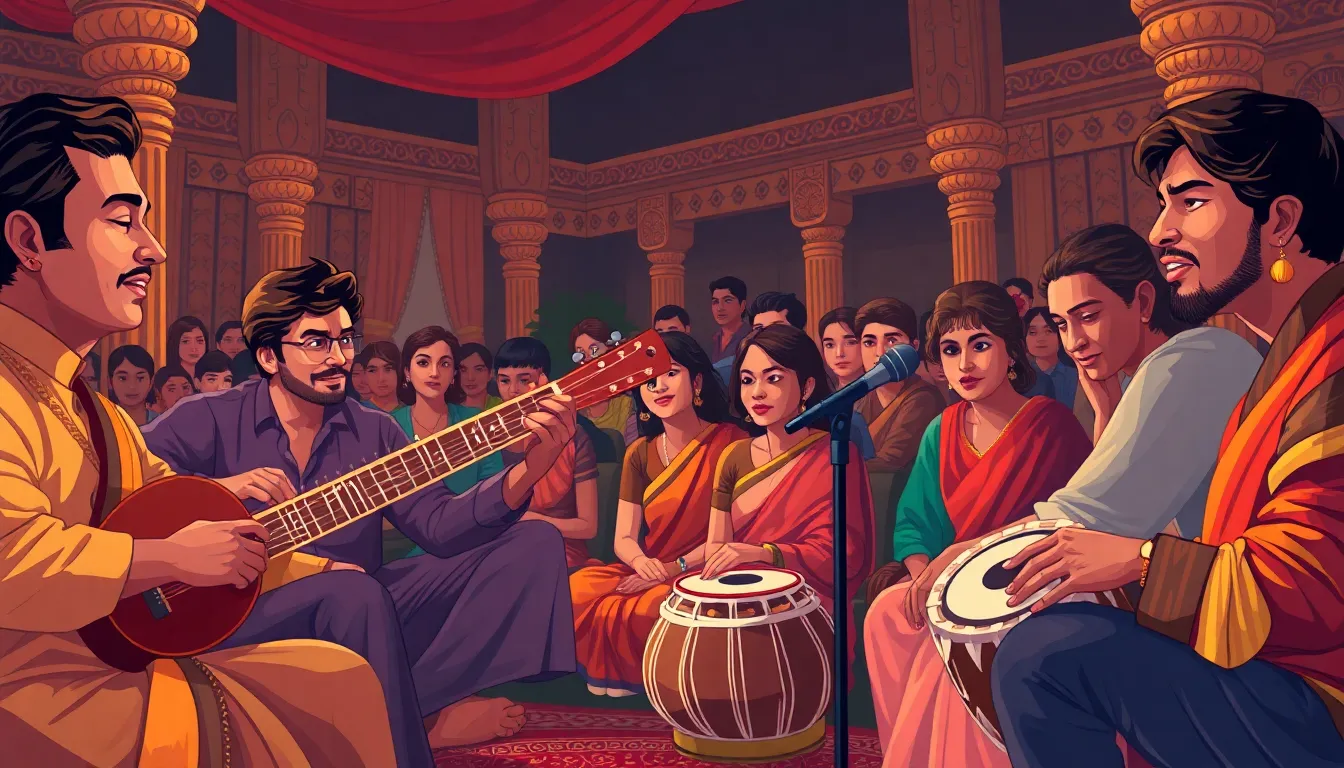In the vibrant world of Indian classical music, “nishidhasagamam” stands out like a quirky, yet charming, cousin at a family reunion. This intriguing concept, which refers to the forbidden notes in a raga, adds a dash of spice to compositions that keeps listeners on the edge of their seats. Imagine a musical rollercoaster where certain notes are off-limits, creating tension and excitement that can make even the most stoic audience member tap their feet.
Table of Contents
ToggleOverview of Nishidhasagamam
Nishidhasagamam represents the forbidden notes in Indian classical music, enriching the emotional landscape of ragas. This concept enhances the depth of compositions, allowing musicians to explore tension and resolution in their performances.
Historical Context
Nishidhasagamam traces back centuries, emerging prominently in ancient texts on music theory. Scholars like Bharata Muni highlighted its importance in the Natyashastra, emphasizing the role of forbidden notes in evoking deeper emotions. Many musicians throughout history adopted these concepts, infusing their compositions with innovative expressions. The evolution of nishidhasagamam reflects changing musical paradigms and showcases the versatility of ragas.
Cultural Significance
Culturally, nishidhasagamam holds a special place in Indian music traditions. This element resonates with audiences, transforming the listening experience into a profound journey. Musicians often use forbidden notes to provoke thought and evoke complex feelings, making performances memorable. Rituals and classical dance forms also incorporate nishidhasagamam, enriching the overall artistic narrative. The practice fosters a deeper connection between the performer and the audience, reinforcing the importance of emotional resonance in music.
Key Features of Nishidhasagamam

Nishidhasagamam incorporates unique elements that significantly contribute to Indian classical music. Understanding its features reveals the depth of its influence.
Philosophical Underpinnings
Nishidhasagamam embodies the principle of duality in Indian philosophy, where forbidden notes symbolize life’s inherent tensions. Musicians use these notes to express contrasting emotions, evoking introspection in listeners. Tension manifests through the interplay of these notes, guiding audiences toward emotional resolution. Scholars like Bharata Muni highlighted its importance, noting how this conflict enriches musical narratives. Its philosophical dimensions reveal how it aligns with broader cultural concepts, encapsulating the journey from chaos to harmony.
Thematic Elements
Key thematic elements of nishidhasagamam revolve around conflict and resolution, elements that resonate deeply in performances. Musicians utilize these forbidden notes to create a dramatic tension that captivates audiences. Themes of longing, love, and struggle emerge vividly through melodic explorations where these notes play a pivotal role. The dynamic range of emotions expressed positions nishidhasagamam as essential to raga compositions, enhancing their impact. Audiences often find themselves drawn into a vivid emotional landscape, experiencing the full spectrum of human feelings conveyed through the music.
Popular Interpretations of Nishidhasagamam
Nishidhasagamam evokes rich, diverse interpretations within Indian classical music. Different scholars and musicians offer unique perspectives on its role and significance.
Traditional Interpretations
Traditional interpretations highlight nishidhasagamam as a critical element in the emotional fabric of ragas. Scholars like Bharata Muni firmly positioned the concept in the Natyashastra, underscoring its importance in conveying emotional depth. Musicians often utilize forbidden notes to elicit specific feelings, enabling a connection with the audience. The duality theme reflects life’s tensions and contradictions, with each forbidden note acting as a catalyst for emotional expression. Its role in enhancing storytelling is vital, allowing performances to resonate deeply with listeners, thereby creating a captivating experience and invoking complex responses.
Contemporary Perspectives
Contemporary musicians redefine nishidhasagamam within modern frameworks. They explore contemporary themes such as urbanization and global influences while maintaining deep cultural roots. Musicians experiment with blending genres, positioning forbidden notes in innovative contexts. This evolution broadens the emotional range experienced by audiences, creating new forms of connection. Moreover, performers often engage younger generations, making traditional expressions more relevant today. By embracing creative interpretations, artists ensure the concept’s evolution continues, fostering an ongoing appreciation for nishidhasagamam.
Impact on Literature and Art
Nishidhasagamam significantly influences both literature and visual arts, deepening the cultural context of Indian creative expressions.
Influence on Writers
Writers draw inspiration from nishidhasagamam, using its themes of tension and resolution in their narratives. Forbidden notes symbolize emotional depth, allowing authors to develop complex characters and plots. Through these musical elements, literary works evoke feelings of longing, struggle, and passion. Poets, in particular, harness the evocative potential of nishidhasagamam to craft verses that resonate with readers. Themes explored in literature often parallel those found in musical compositions, enriching storytelling and enhancing emotional engagement. Thus, nishidhasagamam serves as a catalyst for innovative expression in both prose and poetry.
Influence on Visual Arts
Visual artists reflect nishidhasagamam’s essence in their creations, capturing its emotional complexities through color and form. The tension between forbidden and permissible notes translates into dynamic compositions, engaging viewers on multiple levels. Artists often depict themes of conflict and harmony, mirroring the emotional landscape inherent in ragas. The use of contrasting colors can evoke similar feelings of turbulence and resolution experienced in music. By incorporating these concepts, visual art forms provide audiences with a multifaceted exploration of human emotions, deepening the connection between sound and sight. Within this interplay, nishidhasagamam becomes a vital influence, shaping artistic narratives across mediums.
Nishidhasagamam stands as a cornerstone of Indian classical music, weaving together emotional depth and artistic expression. Its ability to evoke tension and resolution captivates audiences, creating a rich tapestry of human experience. As musicians continue to explore and redefine these forbidden notes, nishidhasagamam remains a vital force in both traditional and contemporary contexts. This concept not only enhances musical compositions but also influences literature and visual arts, deepening the cultural narrative. By embracing the complexities of nishidhasagamam, artists foster a profound connection with their audiences, ensuring its enduring significance in the ever-evolving landscape of Indian arts.


